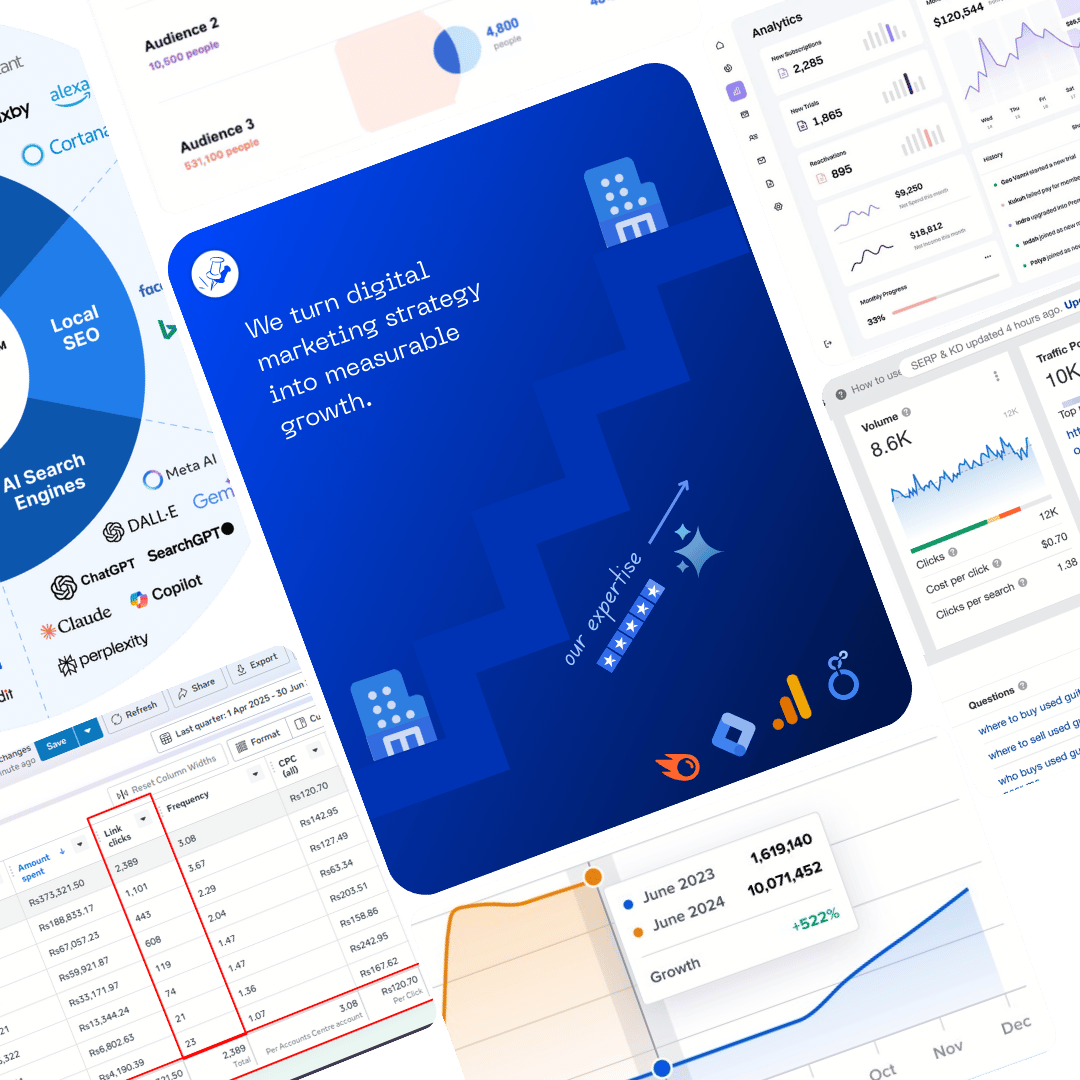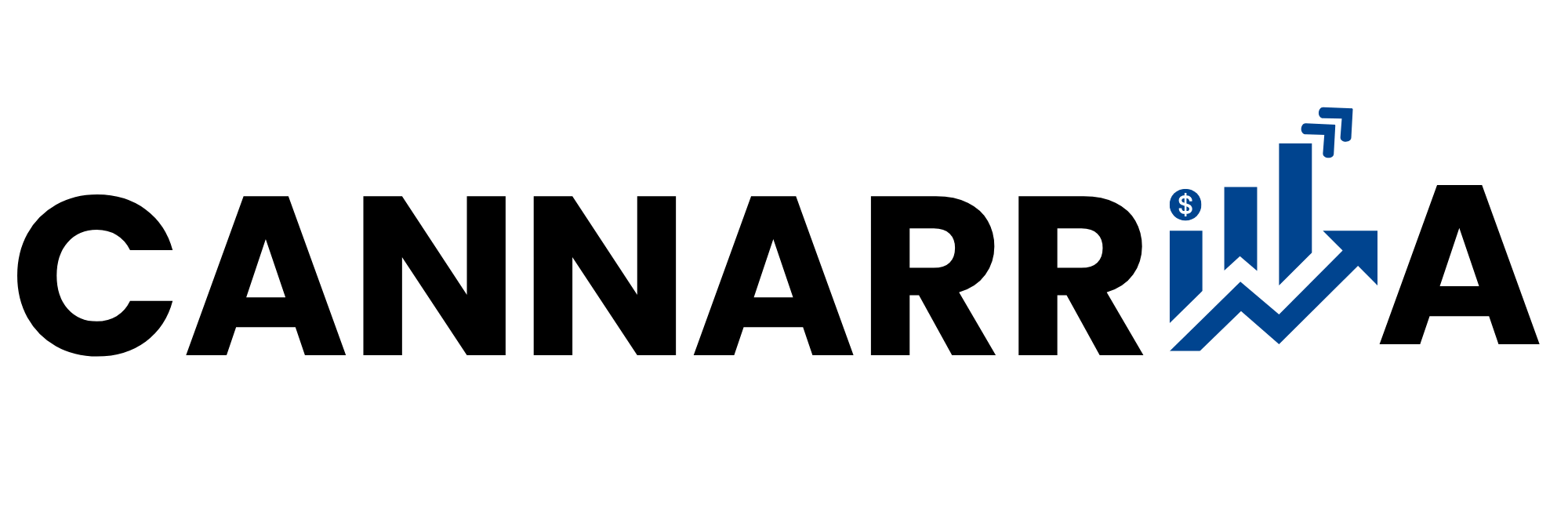Harness Every Click, Scroll & Conversion with GTM, Meta Pixel & Google Ads
We implement advanced event tracking using Google Tag Manager, Facebook Pixel, and Google Ads to capture the actions that truly drive revenue. From custom events to data layer integrations, we ensure your business sees the full customer journey.
Why Google Tag Manager ?

Without Accurate Data, You’re Marketing Blind.
Complete End-to-End Tracking Setup & Management
From button clicks to purchase funnels, we set up advanced event tracking across Google Tag Manager, Meta Pixel, and Google Ads—so every action fuels your growth.
Centralized tracking without messy code.
Easily Crawlable
Search engine bots (Googlebot, Bingbot, etc.) should be able to easily crawl your site without obstacles.
Key points:
Clear internal linking structure.
No important pages blocked in robots.txt.
HTML navigation menus, not hidden in scripts.
Clean, descriptive URLs with minimal parameters.
Common issues:
Blocking key pages in robots.txt.
Broken internal links (404 errors).
Over-reliance on JavaScript navigation.
Orphan pages with no inbound links.
Fully Indexable
Once crawled, pages are stored in the search engine’s database and can appear in search results.
Key points:
No accidental noindex tags.
Unique content, no duplicates.
Proper 200 OK status.
Schema markup and metadata for clarity.
Common issues:
Noindex tags on key pages.
Duplicate content without canonical tags.
Pages behind login walls.
Slow or error-prone servers hindering indexing.
Mobile Optimized
Your website must be designed and optimized to work seamlessly on smartphones and tablets.
Key points:
- Responsive design that adapts to different screen sizes.
- Text is readable without zooming.
- Buttons and links are tap-friendly (spaced well apart).
- Fast loading speed on mobile connections.
Common issues that hurt mobile friendliness:
- Desktop-only design that forces horizontal scrolling on mobile.
- Small text and unclickable buttons.
- Pop-ups or interstitials covering the screen.
- Large uncompressed images slowing down load time.

Accurate tracking across iOS14+ and cross-device journeys.
Search Intent Analysis
Understand what users truly want so your content directly satisfies their needs.
Key points:
- Identify whether a search query is informational, navigational, or transactional.
- Study SERP features (featured snippets, shopping results, videos) to see how Google interprets intent.
- Compare top-ranking pages to find common content types and formats for that intent.
- Adjust your content to align with both user expectations and search engine signals.
High-Volume Keyword Targeting
Capture broad audience interest and drive traffic growth through popular search terms.
Key points:
- Target keywords with high search volume but manageable competition.
- Create comprehensive pillar pages that cover these topics in depth.
- Use internal linking to funnel traffic from these high-traffic pages to conversion-focused ones.
- Monitor performance to ensure traffic quality, not just quantity.
Long-Tail Keyword Discovery
Find niche search terms with strong purchase or conversion intent.
Key points:
- Target phrases of 3+ words that indicate specific needs.
- Often have lower competition, making them easier to rank for.
- Attract highly qualified leads ready to take action.
- Use search suggestions, People Also Ask, and related searches for ideas.
Paid Search Data Integration
Leverage PPC insights to uncover high-converting keywords for SEO.
Key points:
- Analyze Google Ads or Meta Ads data to find terms with the highest conversion rates.
- Identify which ad copy or landing pages perform best for these keywords.
- Use paid search click-through rate (CTR) data to refine organic titles and descriptions.
- Prioritize keywords where paid results show strong ROI for organic targeting.

Maximize campaign ROI with precise event data.
Competitive Keyword Intelligence
Identify competitor-targeted high-value keywords and discover untapped opportunities.
Key points:
Analyze competitor keyword rankings.
Find high-volume, low-competition keywords.
Understand keyword intent (informational, transactional).
Use keyword gap tools for comparison.
Content Strategy Insights
Identify competitor-targeted high-value keywords and discover untapped opportunities.
Key points:
Analyze competitor keyword rankings.
Find high-volume, low-competition keywords.
Understand keyword intent (informational, transactional).
Use keyword gap tools for comparison.
Competitor Backlink Profile Review
Uncover competitors’ strongest links and missed link-building opportunities.
Key points:
Identify top referring domains.
Analyze anchor text diversity.
Find blogs, directories, or partners for pitching.
Reclaim broken backlinks pointing to them.
Gap & Opportunity Mapping
Pinpoint competitor weaknesses and turn them into SEO advantages.
Key points:
Identify missing content topics.
Find keyword rankings on pages 2-3 that you can outrank.
Analyze under-optimized pages for better content.

Track product views, add-to-carts, purchases, refunds.
Scalable SEO Implementation
Apply proven SEO best practices across hundreds or thousands of pages at once.
Key points:
- Standardize URL structures, heading formats, and internal linking across all pages.
- Ensure site-wide technical settings like canonical tags and structured data are correctly applied.
- Avoid manual, page-by-page updates that slow down large-scale optimization.
Dynamic Content Insertion
Automatically populate page elements with relevant, targeted keywords.
Key points:
- Pull keywords dynamically from product names, categories, or database fields.
- Auto-generate SEO-friendly titles, H1 headings, and meta descriptions at scale.
- Reduce duplication by combining static and dynamic text in metadata.
- Maintain flexibility so keywords can be updated centrally without touching each page.
Consistent SEO Elements
Maintain a uniform optimization structure across all templates for stronger search signals.
Key points:
- Use consistent title formats, meta descriptions, heading hierarchies, and structured data.
- Apply the same schema markup standards across all relevant page types.
- Ensure internal linking patterns remain logical and consistent.
- Keep keyword targeting aligned across similar content types to build topical authority.

Store unique values (e.g., revenue, product IDs, form types) directly from the data layer.
URL Mapping & Redirects
Maintain SEO performance during migration by ensuring every old URL points to the correct new page. Accurate 301 redirects help preserve link equity and prevent user drop-offs.
Key points:
- Create a detailed URL mapping document before migration.
- Implement 301 redirects from old URLs to their corresponding new URLs.
- Test all redirects to confirm they work correctly.
- Avoid redirect chains and loops that can slow down page load and hurt rankings.
Backlink Preservation
Track and analyze your SEO performance immediately after the migration to catch issues early.
Key points:
- Monitor keyword rankings daily for significant drops.
- Check Google Search Console for crawl errors or warnings.
- Track organic traffic trends in Google Analytics.
- Quickly fix broken links, missing meta tags, or indexing issues.
Post-Migration Monitoring
Protect the authority and trust signals your site has earned over time by carrying forward valuable backlinks.
Key points:
- Identify all high-value backlinks using SEO tools
- Ensure linked pages are redirected to equivalent new content.
- Update partners or referring sites if their backlinks point to outdated URLs.
- Monitor for lost backlinks and reclaim them quickly.
Technical SEO Checks
Ensure the technical foundation of your site remains strong post-migration to maintain rankings and performance.
Key points:
- Audit indexing status and confirm important pages are included.
- Verify XML sitemap and robots.txt are updated and correct.
- Check site speed and Core Web Vitals.
Ensure meta tags, schema markup, and canonical tags are preserved.

Fix broken or duplicate tags, and validate events with real-time testing.
URL Mapping & Redirects
Maintain SEO performance during migration by ensuring every old URL points to the correct new page. Accurate 301 redirects help preserve link equity and prevent user drop-offs.
Key points:
- Create a detailed URL mapping document before migration.
- Implement 301 redirects from old URLs to their corresponding new URLs.
- Test all redirects to confirm they work correctly.
- Avoid redirect chains and loops that can slow down page load and hurt rankings.
Backlink Preservation
Track and analyze your SEO performance immediately after the migration to catch issues early.
Key points:
- Monitor keyword rankings daily for significant drops.
- Check Google Search Console for crawl errors or warnings.
- Track organic traffic trends in Google Analytics.
- Quickly fix broken links, missing meta tags, or indexing issues.
Post-Migration Monitoring
Protect the authority and trust signals your site has earned over time by carrying forward valuable backlinks.
Key points:
- Identify all high-value backlinks using SEO tools
- Ensure linked pages are redirected to equivalent new content.
- Update partners or referring sites if their backlinks point to outdated URLs.
- Monitor for lost backlinks and reclaim them quickly.
Technical SEO Checks
Ensure the technical foundation of your site remains strong post-migration to maintain rankings and performance.
Key points:
- Audit indexing status and confirm important pages are included.
- Verify XML sitemap and robots.txt are updated and correct.
- Check site speed and Core Web Vitals.
Ensure meta tags, schema markup, and canonical tags are preserved.

Platforms We Integrate




Our Process
We cover custom event tracking that fuels your ads, analytics, and growth.
Audit & Strategy
Identify gaps in your current tracking setup. Define key events, conversions, and KPIs
Implementation
Deploy GTM tags, triggers, and data layer pushes
Testing
Validate events in GTM Preview & Tag Assistant
Reporting
Sync with GA4, Google Ads, and Meta Ads dashboards
Event Tracking Done Right, Every Time.
From Tracking Chaos to Data Clarity
Certified Tag Manager Specialists
Deep expertise in GTM, GA4, and ad platform tracking.
Pixel + Server-Side Tracking
Future-proofed against browser restrictions and iOS updates.
Custom-Built for Your Business
No cookie-cutter setups; every tag and trigger is tailored.
Actionable Insights
Tracking is useless without strategy—we turn raw data into decisions.
FAQ's
Item #1
Item #2
Item #3
Item #3
Stop Guessing. Start Tracking.
Let us implement an advanced event tracking system that empowers smarter decisions and higher ROI.

